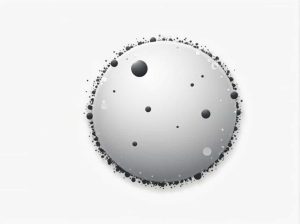The perihelion is the point in Earth’s orbit where it is closest to the Sun. This event occurs once a year and plays a role in understanding Earth’s orbital mechanics and seasonal variations. Many people assume that perihelion coincides with the hottest time of the year, but that is not the case.
In this topic, we will explore what day perihelion occurs, why it happens, and how it affects Earth’s climate and seasons.
When Does Perihelion Occur?
Perihelion typically happens in early January, between January 2 and January 5. The exact date varies slightly each year due to the gravitational influences of other planets and the slight changes in Earth’s orbit over time.
Recent Perihelion Dates
- 2024: January 3
- 2023: January 4
- 2022: January 4
- 2021: January 2
These small variations occur because Earth’s orbit is not perfectly stable. However, perihelion always happens in early January.
Why Does Perihelion Happen in January?
1. Earth’s Elliptical Orbit
Earth follows an elliptical (oval-shaped) orbit around the Sun, meaning its distance from the Sun changes throughout the year. There are two key points in this orbit:
- Perihelion: Earth is closest to the Sun.
- Aphelion: Earth is farthest from the Sun (usually in early July).
2. The Influence of Other Planets
The slight shifts in perihelion dates each year are caused by the gravitational pull of Jupiter, Saturn, and other celestial bodies. Over thousands of years, this can gradually shift perihelion’s timing within Earth’s orbit.
How Close Is Earth to the Sun at Perihelion?
During perihelion, Earth is about 147.1 million km (91.4 million miles) from the Sun. This is around 5 million km (3 million miles) closer than during aphelion, when Earth is about 152.1 million km (94.5 million miles) away.
Despite this difference, perihelion does not cause significant changes in Earth’s global temperature.
Does Perihelion Affect Seasons?
1. Common Misconception: Perihelion Causes Summer
Many assume that being closer to the Sun during perihelion should make it warmer. However, Earth’s seasons are caused by axial tilt, not distance from the Sun.
2. Seasonal Differences Between Hemispheres
- In January (perihelion time), it is winter in the Northern Hemisphere and summer in the Southern Hemisphere.
- In July (aphelion time), it is summer in the Northern Hemisphere and winter in the Southern Hemisphere.
The Southern Hemisphere’s summers are slightly warmer because perihelion happens during their summer months, meaning they receive a bit more solar energy than the Northern Hemisphere does in its summer.
How Perihelion Affects Earth
1. Slightly Shorter Winters in the Northern Hemisphere
Because Earth moves slightly faster in its orbit when it is closer to the Sun, the Northern Hemisphere’s winter is a few days shorter than its summer.
2. Stronger Solar Radiation
Sunlight is about 7% stronger at perihelion compared to aphelion. However, this difference is mostly offset by Earth’s atmosphere and ocean currents, preventing any extreme climate effects.
3. Impact on Tides
The Sun’s gravitational pull is slightly stronger during perihelion, leading to higher tides. However, the effect is minor compared to the influence of the Moon’s gravity.
Perihelion vs. Aphelion: Key Differences
| Feature | Perihelion (January) | Aphelion (July) |
|---|---|---|
| Distance from Sun | ~147.1 million km | ~152.1 million km |
| Speed of Earth’s Orbit | Faster | Slower |
| Sunlight Strength | About 7% stronger | About 7% weaker |
| Hemisphere Experiencing Summer | Southern Hemisphere | Northern Hemisphere |
Perihelion occurs every year in early January, usually between January 2 and January 5. While Earth is closest to the Sun at this time, it does not cause warmer temperatures. Instead, seasons are determined by Earth’s axial tilt.
Understanding perihelion helps us appreciate the complex interactions between Earth, the Sun, and the laws of orbital mechanics. Whether you are an astronomy enthusiast or just curious about our planet, perihelion is a fascinating event that showcases the dynamic nature of our solar system.



